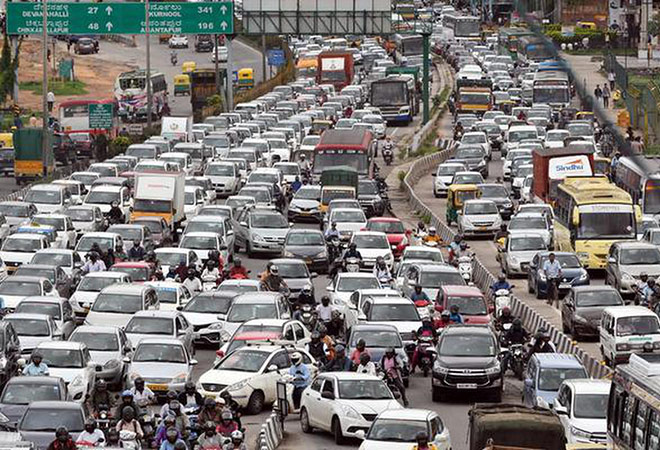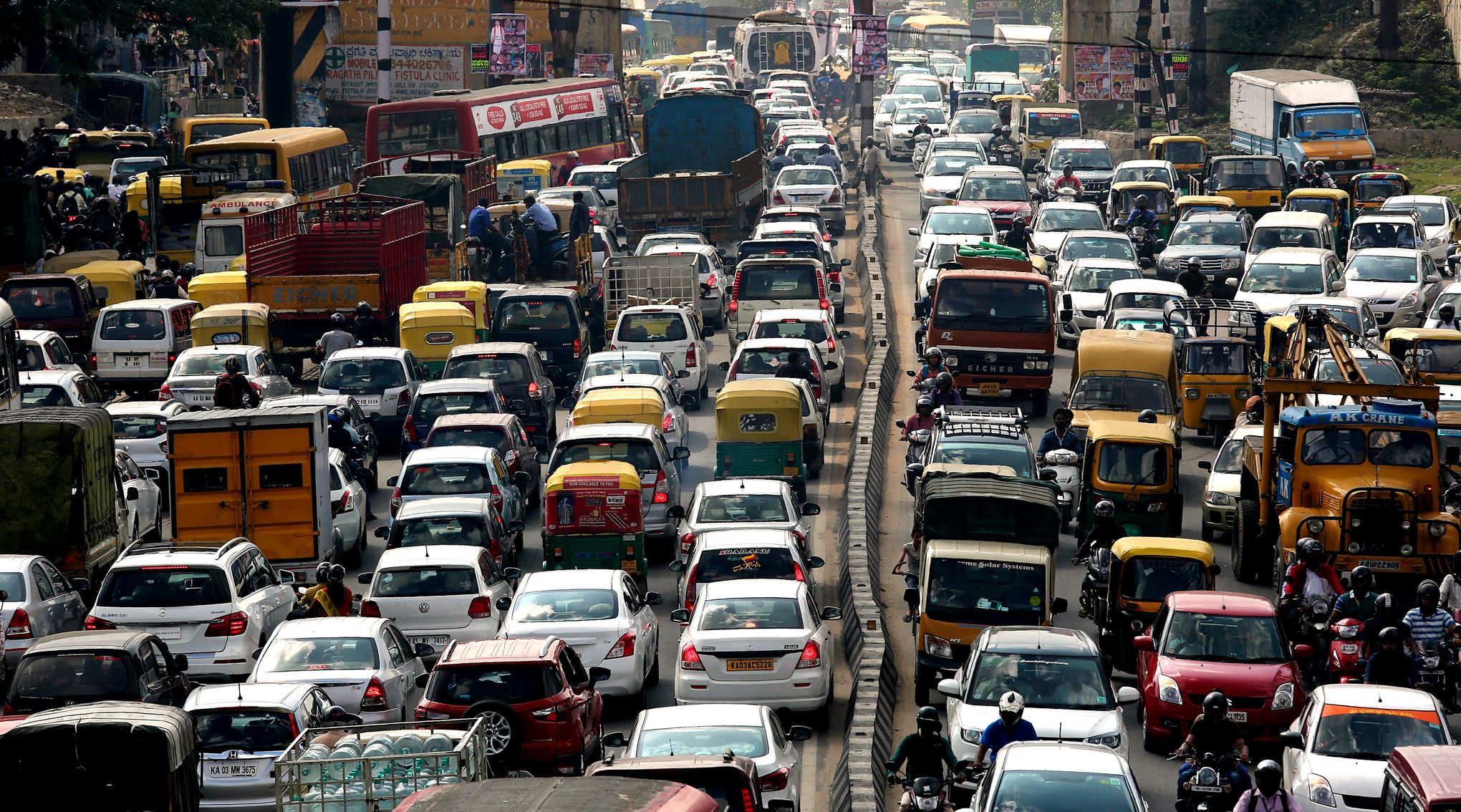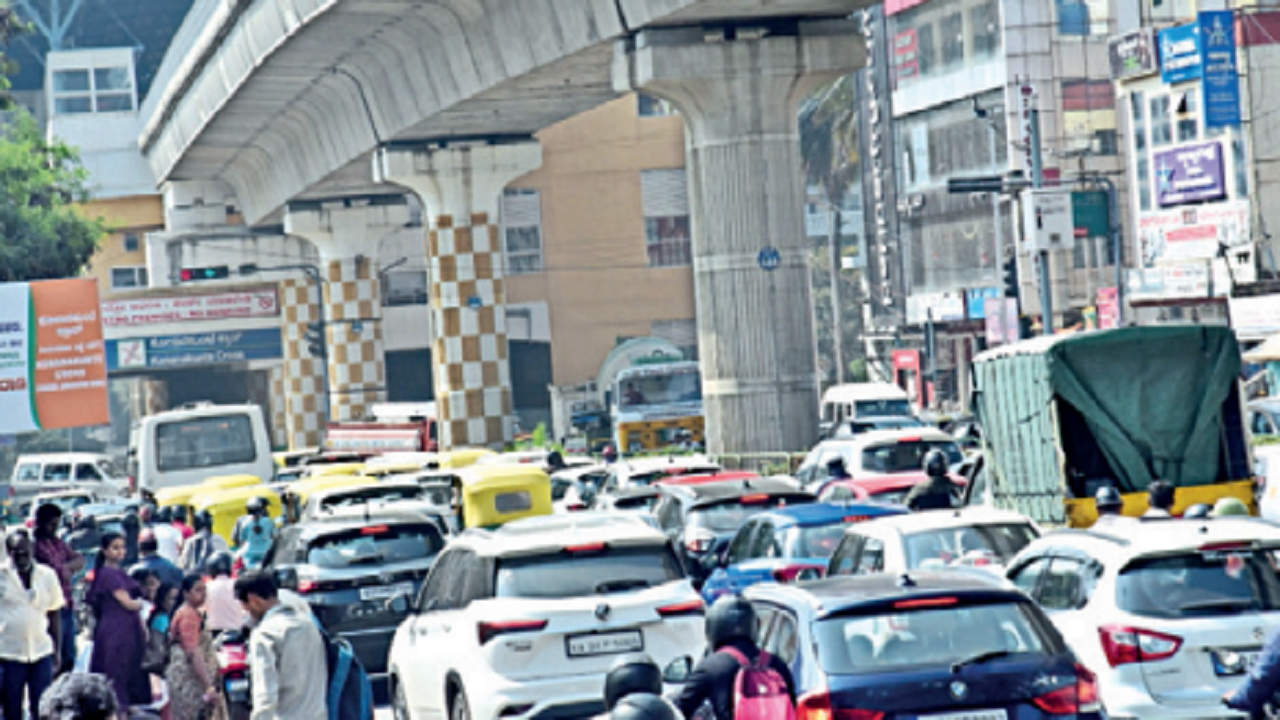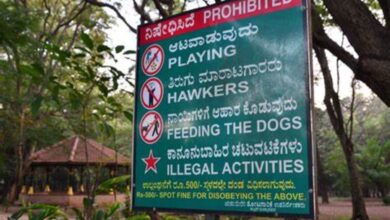Traffic Gridlock Frustrates Bengaluru Locals as State Grapples with Solutions

Traffic Gridlock Frustrates Bengaluru Locals as State Grapples with Solutions
Bengaluru, the Silicon Valley of India, has long been notorious for its crippling traffic congestion, but the recent ordeal faced by commuters has ignited fresh concerns. In a statement that underscores the urgency of the issue, BJP Member of Parliament PC Mohan highlighted a four-hour traffic jam on Bengaluru’s Outer Ring Road, leaving tech professionals, office-goers, and school buses stranded in a sea of vehicles. Mohan pointed out that the proposed Baiyappanahalli-KR Pura metro link could have provided relief, but he lamented the state government’s perceived inaction, leading to prolonged suffering for residents.
The situation on Bengaluru’s roads has reached a tipping point, with “frustrated” locals openly expressing their discontent with the government’s inability to tackle the city’s persistent traffic woes.
Chronic Traffic Woes in Bengaluru
Bengaluru, often lauded as India’s IT hub, has experienced unprecedented growth over the past few decades. The city’s economic boom has attracted a substantial influx of professionals, leading to an ever-expanding vehicular population. As a result, the once-green city is now marred by traffic snarls that are notorious for causing daily frustration and inconvenience.
The recent incident on the Outer Ring Road exemplifies the chronic nature of Bengaluru’s traffic problems. Thousands of commuters found themselves ensnared in a gridlock that lasted an astonishing four hours. For techies rushing to work, parents escorting their children to school, or office-goers trying to meet deadlines, this experience was nothing short of a nightmare.

Metro Link as a Potential Solution
PC Mohan, a prominent BJP MP, emphasized that the long-awaited Baiyappanahalli-KR Pura metro link could have been a game-changer in alleviating Bengaluru’s traffic woes. The metro project, once completed, would have provided a reliable and efficient alternative mode of transportation, reducing the city’s dependence on overcrowded roads.
However, the delay in implementing this project has only compounded the city’s problems. The metro link, initially proposed as a solution several years ago, has remained mired in bureaucratic hurdles and funding issues, leaving residents to cope with increasingly unbearable traffic conditions.
Government Inaction Sparks Public Outcry
The frustration among Bengaluru’s residents has been brewing for years, but the recent traffic gridlock has served as a catalyst for public outcry. PC Mohan’s statement reflects the sentiments of many locals who feel that the state government has been ineffective in addressing the city’s pressing issues.
While Bengaluru’s traffic problems are undoubtedly multifaceted, the government’s perceived inaction and lack of timely solutions have exacerbated the situation. The city’s infrastructure has struggled to keep pace with its rapid growth, leading to bottlenecks and congestion on major roadways.

Looking Ahead: Urgent Need for Comprehensive Solutions
Bengaluru’s traffic crisis is not a problem that can be ignored any longer. As the city continues to attract talent and investments, the burden on its transportation infrastructure will only increase. To avoid further deterioration of the quality of life for its residents and maintain its status as a global tech hub, Bengaluru must urgently implement comprehensive solutions.
These solutions should encompass not only the completion of critical projects like the Baiyappanahalli-KR Pura metro link but also improvements in public transportation, the development of smart traffic management systems, and urban planning that prioritizes sustainable mobility.
In addition to the immediate need for infrastructure improvements and better transportation management, Bengaluru must also consider long-term sustainability. The city’s unchecked urban sprawl and unchecked vehicular growth have contributed to environmental degradation, including air pollution and increased carbon emissions. Addressing these issues requires a holistic approach that integrates eco-friendly transportation options such as electric buses, cycling lanes, and pedestrian-friendly infrastructure.
Furthermore, embracing innovative technology is essential for optimizing traffic flow and reducing congestion. Smart traffic management systems, powered by real-time data analytics and artificial intelligence, can help predict traffic patterns, reroute vehicles, and synchronize traffic signals. Such advancements not only enhance the efficiency of transportation but also reduce fuel consumption and emissions, ultimately benefitting both the environment and the quality of life for Bengaluru’s residents.
Public awareness and participation are equally crucial in the quest to transform Bengaluru’s transportation landscape. Civic engagement and advocacy for sustainable mobility can create a groundswell of support for change. Additionally, initiatives promoting carpooling, ride-sharing, and the use of public transportation should be encouraged and incentivized to reduce the number of private vehicles on the road.
In conclusion, the recent traffic debacle in Bengaluru serves as a stark wake-up call for a city teetering on the edge of transportation gridlock. While the frustration of its residents is palpable, it also presents an opportunity for collective action and change. Bengaluru’s future hinges on its ability to swiftly address its traffic challenges with a combination of immediate infrastructure upgrades, long-term sustainability measures, technological innovation, and active community involvement. Only through these multifaceted efforts can the city hope to restore the mobility and vitality that have long been its hallmark.

Conclusion: A City at a Crossroads
Bengaluru stands at a critical juncture in its development. Its success as an IT powerhouse has been accompanied by the unintended consequences of traffic gridlock and deteriorating air quality. The recent four-hour traffic jam on the Outer Ring Road serves as a stark reminder of the urgent need for action.
The state government, local authorities, and citizens must come together to find innovative and sustainable solutions to Bengaluru’s traffic challenges. Only through collective efforts and a commitment to change can the city regain its reputation as a vibrant and livable metropolis, where progress and quality of life coexist harmoniously.




